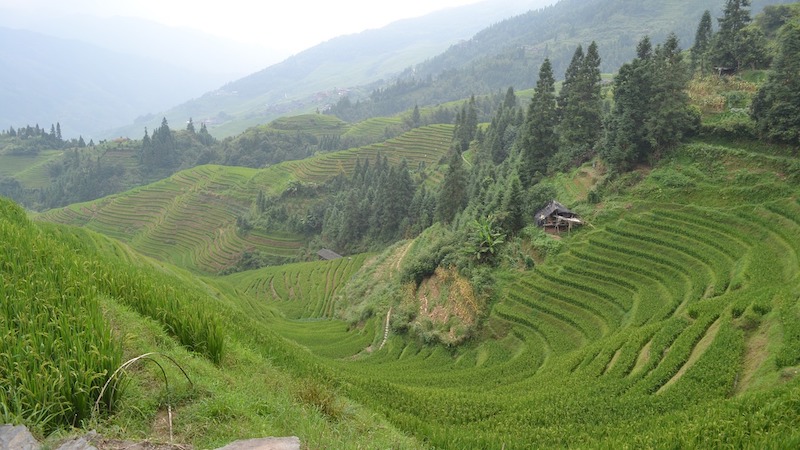It is defined as the clearing of the forests on our planet on a larger scale and it causes land damage across the world. Although this report focuses on the impacts of agricultural practices on the environment many of the practices also have implications for plant animal and human health.
Rice Farming Has A Surprisingly Harmful Environmental Impact Earth Com
These water saving techniques will be.

How does farming rice harm the environment. Nitrogen accumulation in water and on land threatens biodiversity and the health of native plant species and natural habitats. It is highly likely that rice farmers will lose their markets especially export markets eventually causing negative impacts on rural livelihoods. Higher temperatures can decrease rice yields as they can make rice flowers sterile meaning no.
Most studies on the climate impacts of rice have measured methane emissions from continuously flooded rice farms. In this paper we review the published literature and assess the depth of recent research since 2000 on crop x environment interactions for rice maize. Over a 20-year horizon total greenhouse gas emissions from rice could take the same toll on the environment as 1200 coal plants with the impact dropping to the equivalent of 600 coal plants over.
The main culprit is methane a potent greenhouse gas emitted from flooded rice fields as bacteria in the waterlogged soil produce it in large quantities. Although there is no commercially grown GM rice. If Golden Rice is released in to the environment it will cause GM rice contamination and affect traditional conventional and organic farmers.
Other Ways The Environment Is Impacted Deforestation is a big side effect of agriculture that greatly impacts our planet and the environment. Overgrazing over cultivation and deforestation all damage the soil making it more prone to the effect of erosion. In addition fertilizer application in soil leads to the formation and release of nitrous oxide one of the most harmful greenhouse gases.
Rice seedlings will be able to be transplanted earlier in the spring and farmers can. The cultivation of rice has had an enormous impact on the natural biome. Nitrous oxide is longer lasting in the atmosphere than other emitted greenhouse gases like methane and traps more heat over time.
Many environmental factors constrain the production of major food crops in Sub-Saharan Africa and South Asia. At each stage we emphasize environmental constraints on production eg poor soil quality water scarcity crop pests etc and also environmental impacts of crop production eg soil degradation water depletion and pollution greenhouse gas emissions etc. Higher carbon dioxide levels typically increase biomass production but not necessarily yield.
Farmers often cause deforestation by clearing land for their crops. The impact of rice farming on climate change and atmospheric greenhouse gas levels has been largely underestimated because reports on rice farming emissions leave out nitrous oxide. Upland Cultivars of Rice One of the most important resources needed for dry rice farming is cultivars of rice that are suited to grow in drier climates.
Increases in both carbon dioxide levels and temperature will also affect rice production. Farmers and others who come in. It has caused the natural biomes to deteriorate and caused the natural way of life to collapse leaving no.
This can be made worse if hedgerow has been removed. The soil itself is an ecosystem and inappropriate farming techniques can lead to soil erosion. As climate change continues to affect the region rice farmers may have a longer window for growing rice.
Global rice production is releasing damaging greenhouse gases into the atmosphere doing as much harm as 1200 average-sized coal power stations according to the Environmental Defense Fund EDF. Section Four extends the discussion from farming practices to examine the impacts of industrial crop processing. At the same time these food production systems themselves have a range of negative impacts on the environment.
Rice has affected the natural biome that it is grown in in a devastating way. The hedgerow acts as a natural windbreak and the roots help hold the soil together. In addition current climate mitigation strategies for rice production focus on reducing methane emissions by alternate wetting and drying or intermittent flooding.
More carbon dioxide in the atmosphere and rising temperatures cause rice agriculture to release more of the potent greenhouse gas methane CH 4 for each kilogram of.
Rice Farming Up To Twice As Bad For Climate Change As Previously Thought Study Reveals The Independent The Independent
We Can Grow More Climate Friendly Rice
Will Reducing Cultivated Rice Areas Rationalize Water Egypttoday
The Input And Output For Rice Cultivation By Using The Water Footprint Download Scientific Diagram
Existing Rice Production Sustainability Of Rice Production
Pdf Environmental Impacts Of Rice Cultivation
Rice Import Brings Disadvantages For Local Farmers Expert En Tempo Co Tempo Co
Japanese Farmer Tending The Rice Paddy Japanese Farmer Rice Paddy Photo
In Addressing Climate Change Rice Production Needs More Attention And Urgent Action Opinion Eco Business Asia Pacific


0 comments:
Post a Comment